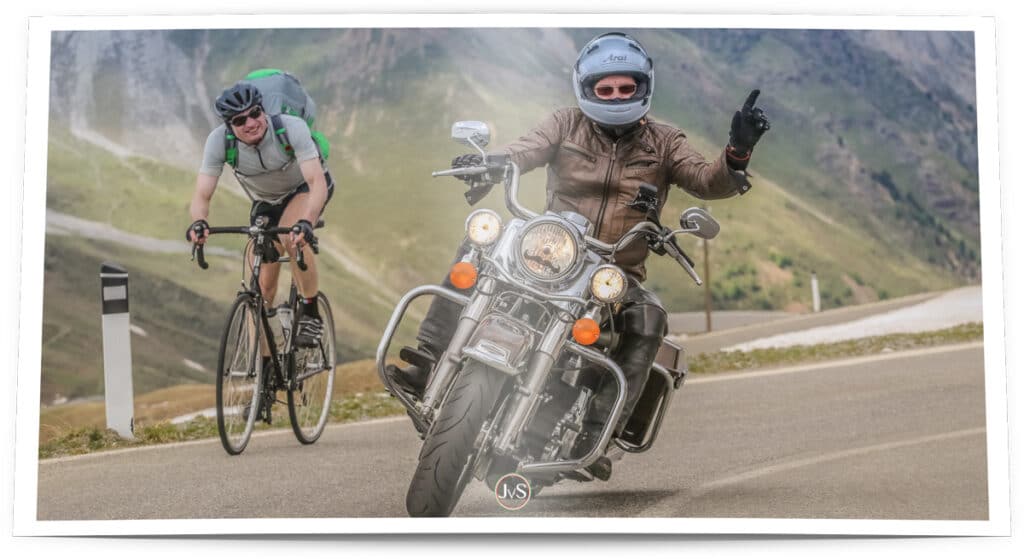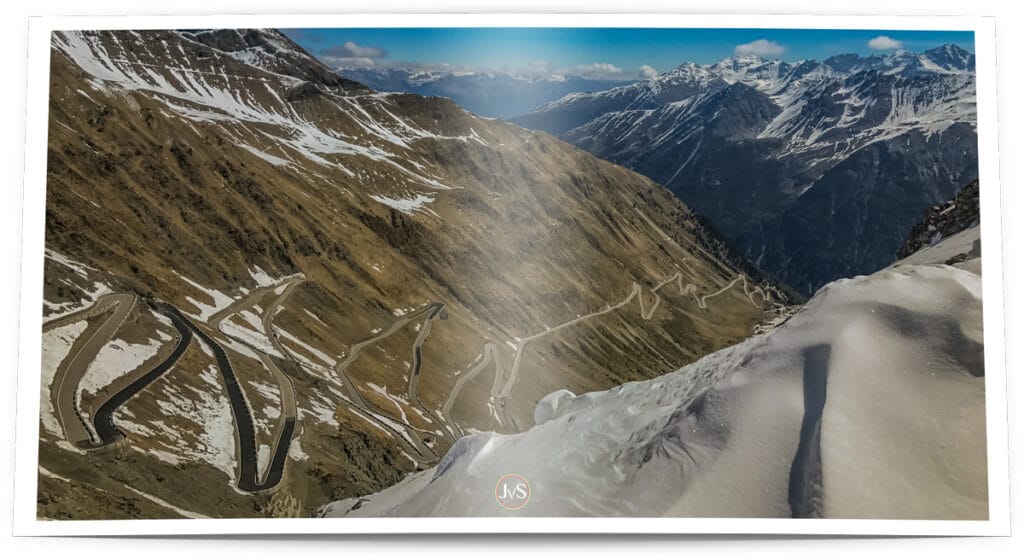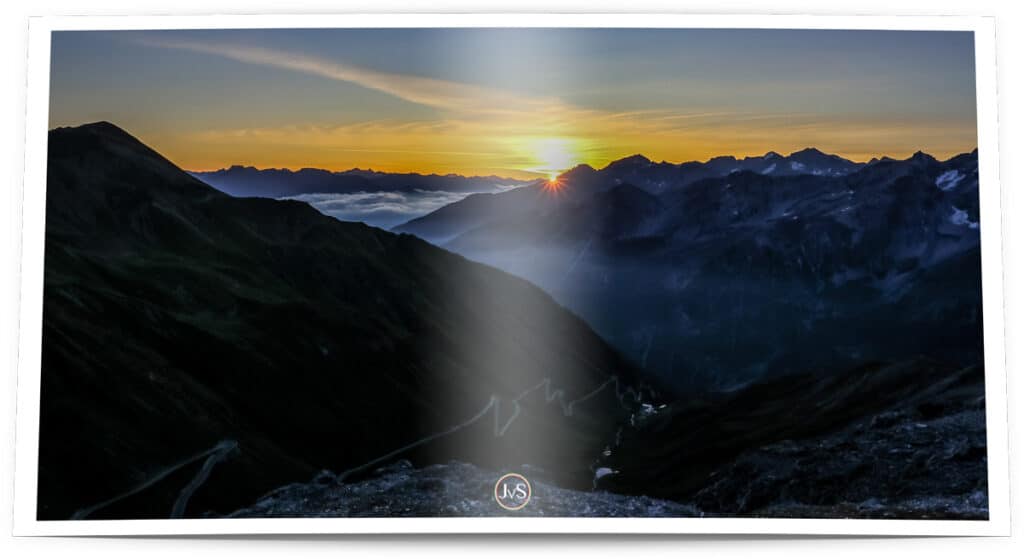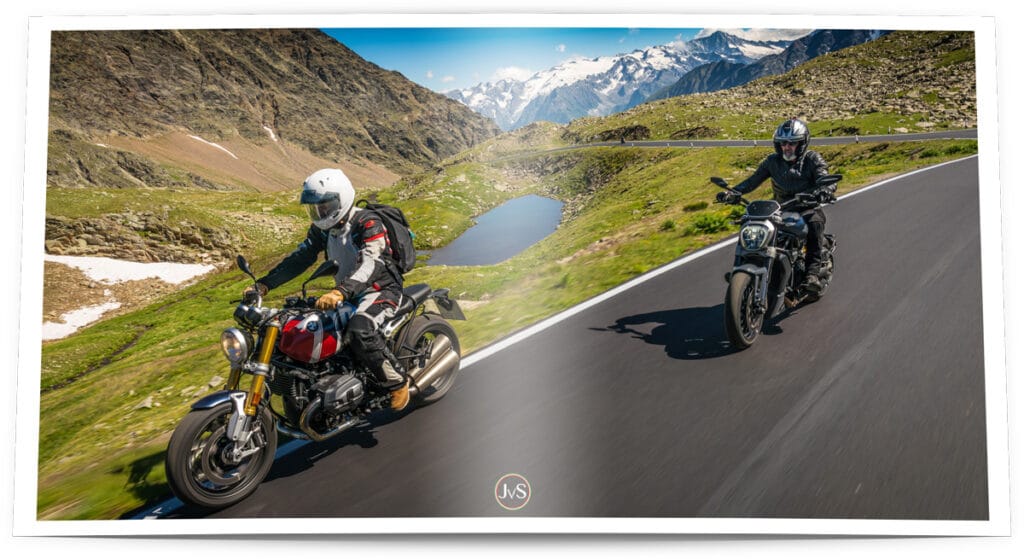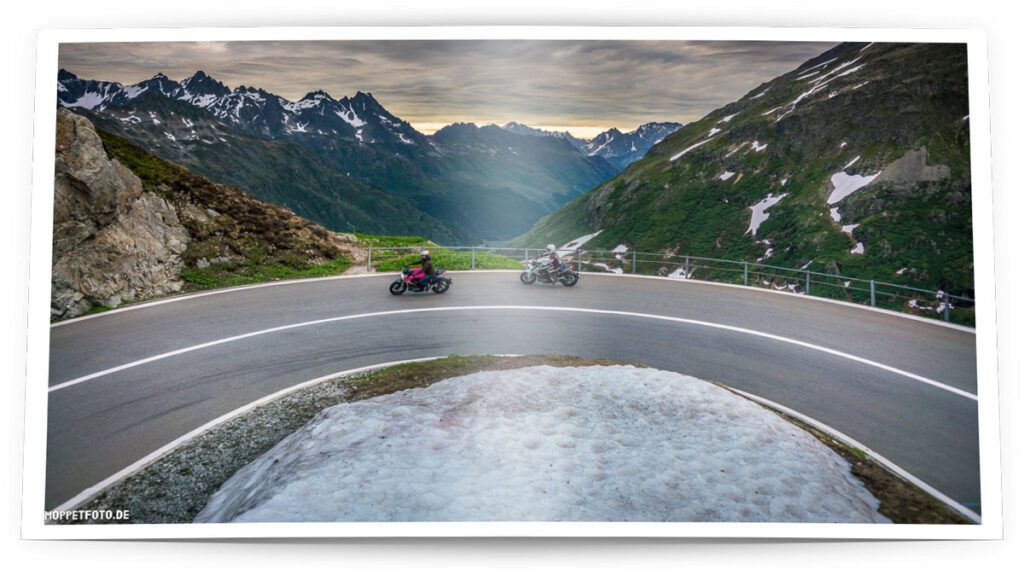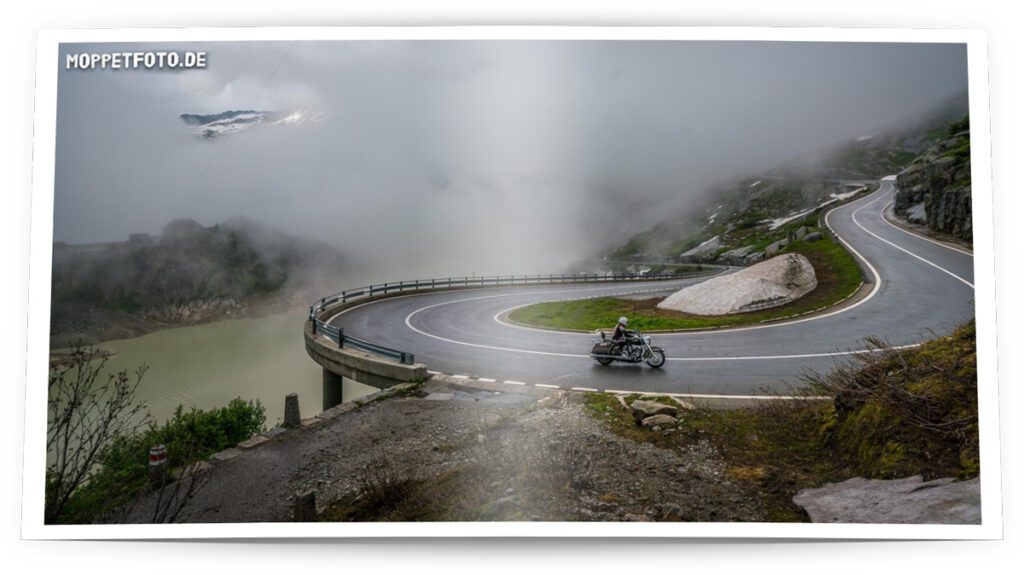
The Furka Pass. When I saw this epic road for the first time – from the ramp of the Grimsel Pass – only one thing came to my mind: WHAT a boulevard.

This story about the Furka appeared in the “Passportrait” series in MOTORRAD, Europe’s largest motorbike magazine, issue 13.2022 (June). The Passportrait is a collaboration between Uli from www.moppetfoto.de and myself.
Before you read, please note: this post was translated with the help of Deepl.
If you find any errors – please have fun first and then give me a hint.
I’m on the way on the Furka road, coming from the Valais, along the still young, green-grey and yet already mighty and wild Rhône. Oberwald with its dark wooden houses disappears into the valley at the back, while the roadway gains height in the dense forest. The narrow track of the Furka railway is sometimes driven under, sometimes crossed, sometimes runs parallel or disappears into the mountain, where it loops in long tunnels to prevent the historic train sets from failing on the incline. It is cool here in the evening, the asphalt is in the shade.
After passing through a tunnel paved in the Tremola style, the path seems to end at a wall – directly ahead, filling the entire vision, the steep Meienwang builds up, the southern ramp of the Grimsel Pass, with retaining walls and hairpin bends clinging to it.
Tremola style
on the Furka Pass
A few metres later, the village of Gletsch is reached. The name promises great things – the literally huge “Grand Hotel Glacier du Rhône” does not disappoint. Its appearance still exudes the luxurious atmosphere of the late 19th century, when a trip to the Upper Valais was probably only possible for members of the high society.

Taking a rest in front of the Grand Hotel Glacier du Rhône
Who, while strolling in the park, at the sight of the Rhône glacier, which reaches all the way here and gives it its name, were asked the question: freshly harvested glacier ice desired in the cocktail, gentlemen?
Meanwhile, in its place, kilometres away, only a scar gapes in the mountain. Crevices in the rock, which over thousands of years was crushed and abraded by the thick ice of the glacier, now swallow up its meltwater and dramatically spit it out again in another place. Muffled and hauntingly murmuring, the slow death of a natural monument can be heard.
The Furka road now runs along the opposite slope, wide, in gentle curves and with few, well-built serpentines. It not only allows you to see what no longer exists, but also to marvel at the cliff edge 500 metres above Gletsch, from which Switzerland’s most famous hotel ruin looks over the Rhône valley: the Belvédère, built in 1882 for mountain-savvy and solvent travellers, a box seat for unforgettable mountain stage sets.
A true
Alpine Boulevard
To get there, the road cuts long arcs in the direction of the Muttbach valley, crosses the Furka railway tracks one more time and then climbs briskly to hover high above the abyss in five slender concrete serpentines, visible for miles around. The alpine huts below duck into the mountain, with roofs seamlessly blending into the slopes, and so survive – hopefully – the inevitable next avalanche. Here, in one of the snowiest areas of Switzerland, this is certainly not the worst kind of construction, and it also explains the curious, removable guard rails.

The abandoned Belvédère Hotel on the Furka
Unfortunately, the Belvédère, this beautiful house built in the middle of a hairpin bend, has been closed for years – the former glory days of high alpine tourism have passed along with the glacier. Barricades full of fading paint block the view into the noble dining room, award-winning star menus are out. Instead, there’s plenty of overpriced fast food at the car park vis’a’vis, an illegal international drone airport and duckface Instagramming in every corner.
It’s almost a bit of a shame about this magical place.
The top of the pass is only a few kilometres and two hairpin bends away. In keeping with the noble house just passed, the road runs broad and flat along the slope, like a boulevard. At the end, near at the Furka crest, a car park calls you to pause.
The view across the Bernese and Valais Alps to the peaks of the Eiger and the magical Matterhorn is overwhelming. At the end of the lower Grimsel Pass road, the shining blue Totensee, in which ice floes can still float in summer, stands out from the mountain world. Behind it, a huge rock mass, black from granite and white from eternal ice, rises up to 4000 metres into the sky. It is difficult to take your eyes off it.

View of the Grimsel ramp
Once crossed, the Furka changes its character, becomes turbulent, narrower, more confusing. Mighty boulders lie in the sparsely vegetated slopes, as if thrown there by giant hands and appearing menacingly unstable.
Immediately after the Hotel Furkablick, which stands loftily on a rocky ledge, two challengingly narrow hairpin bends and partly exposed passages wait. Only a few, but always precisely positioned boundary stones protect you from falling into the abyss of the Garschental – swiss precision. Even after the most severe avalanche winter, rarely one of them will be missing.

Swiss precision at the roadside
This is followed by an even passage along the slope terrace. Retaining walls of stone and concrete alternate with unpaved, roughly hewn rock and partially decaying dry stone walls. Deep in the valley, the young Reuss river seeks its way – the Furka railway, which shortly before had passed through the pass, follows it with acrid clouds of smoke. Anyone who wants to change from two wheels to the cogwheel railway in view of this sight can descend 260 metres in altitude from Tiefenbach to the stop.
A wide right-hand bend, this time around the Hotel Galenstock, is the prelude to the final cornering fun in its purest form, in the middle of the fascinating alpine landscape of the Gotthard massif.
Not least because of this, some fast-paced scenes from the movie “Goldfinger” were filmed on this section in the 1960s; a sign proudly looking over the Ursenen valley with an information board points to the “James Bond Road” – completely without special effects, but with the guarantee of interesting encounters with Goldfinger fans.

The Furka Pass – pure cornering fun
Nine kilometres later, after a flat roll-out, the roundabout in Hospental demands a decision: Gotthard, Oberalp or the Schöllenen Gorge with subsequent conquest of the Susten Pass?
The almost 30 km long Furka Pass with its 24 hairpin bends on both ramps connects Oberwald in the canton of Valais (Obergoms) with Realp in the canton of Uri (Ursenental) and is one of the highest Alpine passes in Switzerland. It runs from southwest to northeast, was upgraded in the mid-19th century and was the longest Swiss pass road when completed.
Together with the Grimsel and Susten Passes it can be combined into a 120 km long round trip, the so-called “King’s Tour” with more than 6,000 metres in altitude.
Thank-Yous, High-Fives & Links
- Hotel Tiefenbach
For the accommodation during the production of this portrait, the catering and the flexibility in the weather caprioles - Country Road Alpnach – Zero Zentralschweiz
For providing the motorcycles and the technical support
Perfectly matching:
Let’s climb the Stelvio together!
Stelvio – Count from 1 to 10!
Have fun looking at them!
Magical Moments
Dream Roads: The Gavia Pass (2621 m)
Dream Roads: The Susten Pass (2224 m)
Unimaginable?

